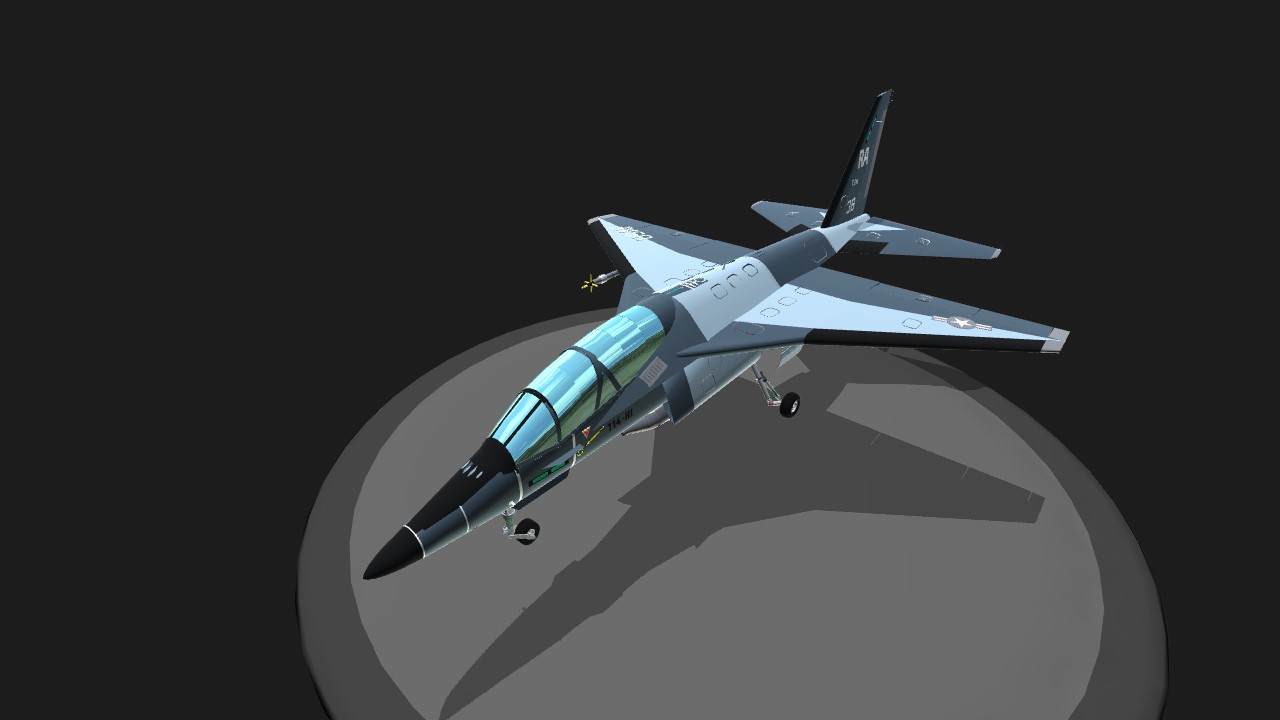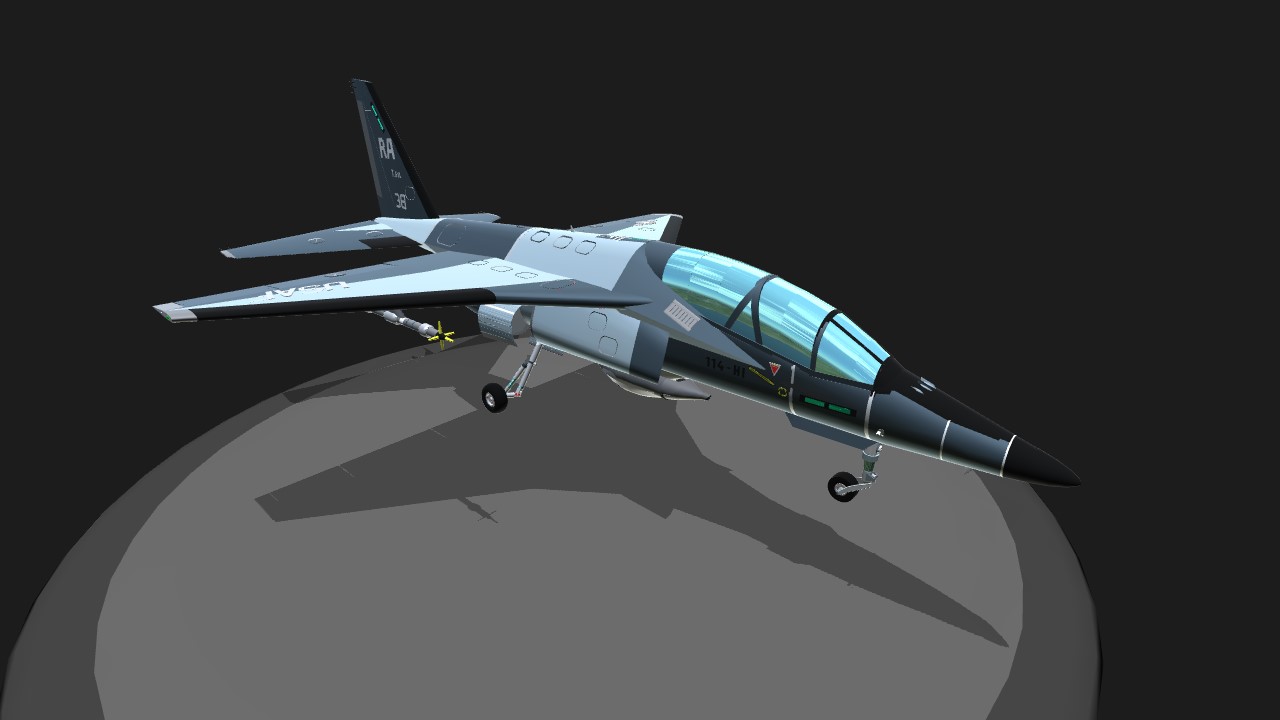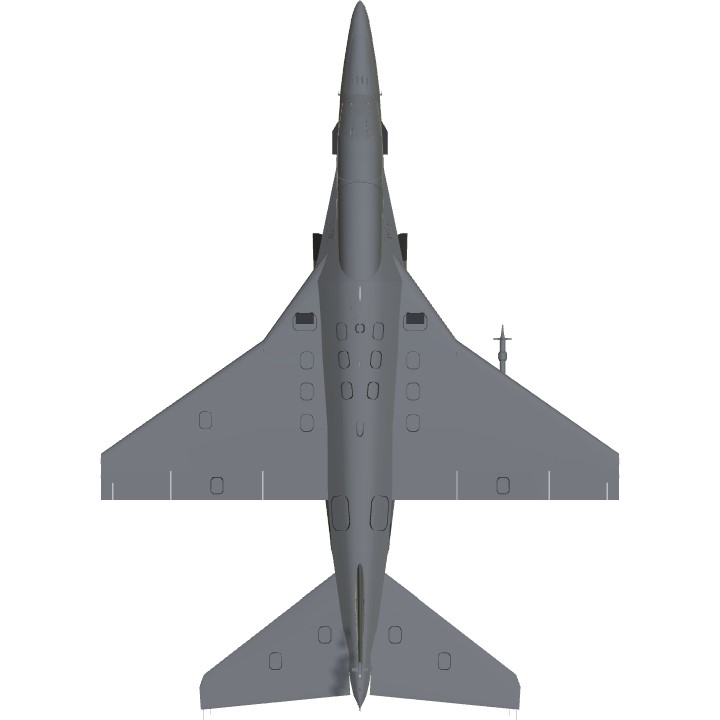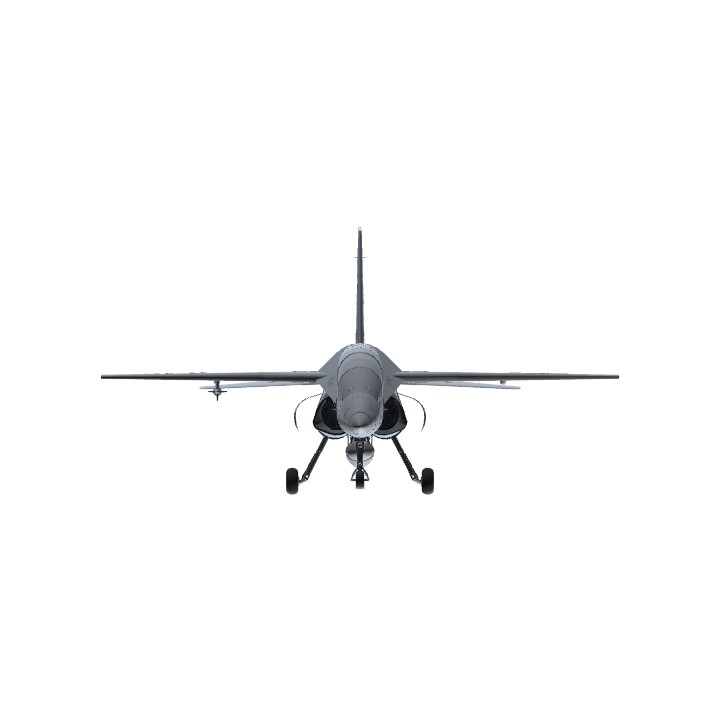Advanced Jet Trainer – candidate aircraft for USAF’s T-X program
>>>US Navy variant here<<<

IMPORTANT NOTE: Aircraft has been flight-tested using a Saitek P2600 Rumble Force Gamepad for detailed handling and smoother operation. It is recommended to use a gamepad, joystick or mouse-as-joystick mode for flying this aircraft.
1) CONTROLS
• AG1: Landing Speedbrakes activation
• AG2: Gyro-stabilization activation
• AG3: Formation Lights activation
• AG4: Drag chute deployment
• AG5: GAU-22B Gun Pod activation
• AG8: OEI training activation (see below)
• VTOL Down: Flaps deployment
• TRIM: Normal operation (Tab-Down for Pitch-Up)
OEI (One Engine Inoperative) is a training procedure that helps student pilots to effectively control and safely land an aircraft which has suffered a loss of power to its main powerplant.
2) T/O INSTRUCTION
• TRIM: 1 TAB DOWN
• VTOL: 1 TAB DOWN
• THROTTLE: 100%
• Rotate aircraft at 135mph (fully loaded configuration)
• GEAR UP
• VTOL: NEUTRAL
• TRIM: SET for climbing attitude ~15-20° nose-up
• THROTTLE: Adjust for cruising flight ~60%
• Continue Flight
3) LDG INSTRUCTIONS
• Reduce Airspeed at 250mph and below
• Align with Runway at 1.500 ft Altitude and 2NM distance
• GEAR DOWN
• THROTTLE: 10-15% (depends on weight)
• AG2: Activate for Gyro-stabilization
• VTOL: FULL DOWN gradually
• TRIM: FULL DOWN gradually
• AG1: Activate for Air-brake extension
• Establish reasonable Rate of Descent
• Airspeed 130-145mph (depends on weight)
• Make corrections using small THROTTLE movements (~1-3%)
• Maintain Attitude 2°-5° Nose Up
• 20ft before Touchdown add 3-5% Throttle for Flare technique
• At Touchdown: THROTTLE – 0% and AG4 for Drag Chute (if needed)
• When all wheels on ground and airspeed below 100mph - APPLY FULL BRAKES
• At speed below 20mph use nose wheel steering
• Maintain ground directional stability with slight yaw inputs

4) SPECIAL TRAINING PROCEDURES
OEI Training – Simulation for Automated Flame-out Engine /SAFE
• Recommended Altitude for training initiation: >2.000ft
• Recommended Speed for training initiation: >200mph
o When ready for training initiation
• AG8: De-Activate for OEI mode
• AG2: Activate for Gyro-stabilization assistance
• Maintain aircraft control and turn towards nearest safest airfield
• Prepare aircraft for landing configuration
• THROTTLE: 20-25%
• VTOL: 1 TAB DOWN gradually
• TRIM: FULL DOWN gradually
• AG1: Activate for Air-brake extension
• Establish reasonable Rate of Descent
• Airspeed 120-140mph (depends on weight)
• Make corrections using small THROTTLE movements (~3-5%)
• Maintain Attitude 2°-5° Nose Up
o IF A SAFE LANDING CAN BE EXECUTED, then:
• 20ft before Touchdown add 3-5% Throttle for Flare technique
• At Touchdown: THROTTLE – 0% and AG4 for Drag Chute (if needed)
• When all wheels on ground and airspeed below 100mph - APPLY FULL BRAKES
• At speed below 20mph use nose wheel steering
• Maintain ground directional stability with slight yaw inputs
• Bring aircraft to a complete stop and activate AG8
• Continue normal ops
o IF A GO-AROUND IS SELECTED, then:
• AG8: Activate
• THROTTLE: 100%
• AG1: De-Activate for airbrakes retraction
• GEAR UP
• VTOL: NEUTRAL
• TRIM: SET for climbing attitude ~15-20° nose-up
• THROTTLE: Adjust for cruising flight ~60%
• AG2: De-Activate for manual control
• Continue Flight
5) AIRCRAFT OVERVIEW
The HarpiaDS/Raytheon T-61L Kestrel is a modern military twin-engine transonic trainer aircraft, which was developed as a derivative from the T-101A Tercel, in order to participate in USAF’s T-X program. The T-X program has been established to enable the USAF to acquire a new two-seat jet trainer for fast-jet training to replace the Northrop T-38 Talon. One of the driving requirements for the new trainer will be to help prepare pilots for the increased complexity in modern aerial battlefield tactics, particularly information management, that are a part of fifth generation jet fighters like the F-22 Raptor and the F-35 Lightning II.
HarpiaDS, alongside with their American industrial partner, Raytheon, proposed a T-101A Tercel variant for the T-X program, rebranding the aircraft as the T-61L Kestrel. After the successful bid in the T-XN program, the US Navy’s new jet trainer, HarpiaDS and Raytheon are trying to establish a strong presence within the US military industry. The aircraft is heavily based on the Tercel trainer but it had undergone some major modifications, especially in the avionics equipment. The Kestrel has incorporated an advanced simulation system that can fulfill several basic training roles; basic aircraft control, airmanship, formation, instrument and navigation, advanced air-to-air, advanced air-to-ground, and advanced crew/cockpit resource management. Furthermore, there are five advanced training roles that the system is capable to provide efficient and modern air training, such as sustained high-G operations at 7.5–8.5g, aerial refueling, night vision imaging systems operations, air-to-air intercepts, and data-link operations.

The original T.101A was designed for the principal role of lead-in fighter trainer (LIFT), in which capacity the T-61L Kestrel variant will be used to deliver pilot training for the latest generation of combat fighter aircraft, if chosen by USAF. The T-61L uses the same powerplant as its T-101A predecessor, a pair of HarpiaDS Aeneas TFJ-100-KL2 high by-pass turbofan engines and it is capable of transonic flight without using an afterburner, which is designed to reduce acquisition and operating costs. The Kestrel trainer has seating for two pilots in a tandem arrangement. The high-mounted canopy, developed by Harpia’s human ergonomics designing team, provides the pilots with excellent visibility and enhanced bird strike protection. Also, HarpiaDS incorporated an air-refueling dorsal receptacle for range extension and more realistic AAR training using USAF’s flying boom system.
In the operational trainer jet role, the T-61L Kestrel can be armed with two under-wing pylons and one under-fuselage pylon, thus transforming the Kestrel to a limited combat-capable dual-role variant offering modern weapons training and advanced net-centric aerial warfare tactics learning platform. This combat-ready variant has been designated as T-61M Combat Kestrel (M standing for Missionized). Raytheon has developed a special 20mm gun pod the GAU-22B Sledge, that can be carried and fired by the T-61L Kestrel in order to provide A/A and A/G gun firing training.
Additionally, the T-61L Kestrel can be equipped with the ATM-7 Falx Autonomous Air Combat Maneuvering Instrumentation (AACMI) system which is a second-generation GPS-based flight and weapons data recording system. Unlike first-generation ACMI systems, which use ground radars to track and record the position of the aircraft on the range, the ATM-7 Falx AACMI system uses aircraft-mounted satellite navigation system. Radio transmissions from the aircraft report its position in three dimensions to other aircraft on the range and also to ground control. This enables real-time air-to-air exercises to be carried out and also complex ground debriefs (after-action review or AAR) based on data recorded by the Falx AACMI. The de-briefing involves the use of modern graphics and display techniques that can bring out training and other points to aircrew and ground staff and it is a vital part of the T-61L/M Kestrel Integrated Training System.
Variants
T-61L Kestrel: Candidate for the US Air Force T-X program, based on the T.101A
T-61M Combat Kestrel: Missionized T-61 with limited combat capability and equipped with various nav/attack systems and equipped with a wide range of modern weapons.

Credits
Indecision for his F-55 Lammergeier wing design that I used as a basis for the new T-61L wing structure.
ChiChiWerx for his excellent livery and tail-codes advise due to his experience as a former USAF pilot.
EternalDarkness for his test-flying feedback and clever general suggestions.
Specifications
Spotlights
- This craft has been featured
- EternalDarkness 7.3 years ago
General Characteristics
- Created On Windows
- Wingspan 36.7ft (11.2m)
- Length 50.9ft (15.5m)
- Height 19.0ft (5.8m)
- Empty Weight 5,766lbs (2,615kg)
- Loaded Weight 15,843lbs (7,186kg)
Performance
- Power/Weight Ratio 6.808
- Wing Loading 24.5lbs/ft2 (119.8kg/m2)
- Wing Area 645.5ft2 (60.0m2)
- Drag Points 8861
Parts
- Number of Parts 594
- Control Surfaces 8
- Performance Cost 2,433







So awesome! Fictional plane would make a cool last minute entry into T-X! But sorry, Boeing beat you! But if it were real, hope the Air Force would see how well this last minute entry would perform!
well, I'm definitely following you!
Totes legit pictures
Excellent plane
A-29 Super Tucano Is Better !
@JohnnyBoythePilot Funny thing is that my previous plane, the T-61N, was way better and had more features and didn't get featured, but.....SP is a weird place...hehehe
Congrats on getting featured!
@JohnnyBoythePilot That's true! While I was doing some final refinements on the build I read on the news that Boeing/SAAB T-X won the USAF contract...I should have been quicker! Heheheeee
Wonderful build & jet! I love the detail you put into both the jet & and the description. Although Boeing/Saab recently just won the T-X contract for the USAF.
@ChiChiWerx Thank u my friend! Ur advices were very helpful!
Excellent build, well executed and plausible! 😃👍